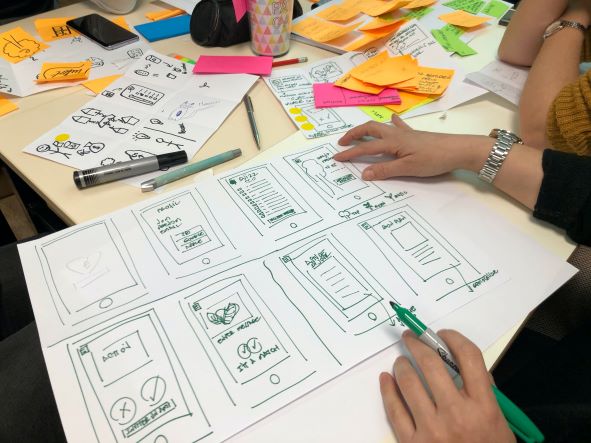So God created man in his own image, in the image of God he created them; male and female he created them. And God blessed them. Genesis 1:27-28.
When you’re teaching management skills to systems engineers working in military organizations, creativity is up there with emotional intelligence.
It’s not their favorite subject – not by a long shot!
Yet creativity ranks high in the management literature as a veritable superpower. If you are going to be a great manager, you’ve got to get good at problem solving. And you’ll need creativity to do that.
People generally tend to rely on their analytical “left brain” to solve highly structured problems, where the variables are quantifiable and decision-makers relatively few. However, in today’s fast-paced, complex global marketplace, creative skills are absolutely essential for solving complex, ill-structured problems.
Also known as “wicked problems,” ill structured problems involve multiple decision-makers with different needs and conflicting values. Problems where outcomes cannot be quantified, and the probability of success is hard to ascertain. Problems that entail risk — and uncertain reward.
In short, creativity is critical to solving most problems in life!
Nothing wrong with analysis, but give it a break. Sometimes synthesis – getting the bigger picture – is key to breakthrough. When your left brain is analytically stuck, and cannot “logic” its way to a solution, try shifting “right.” That is, deliberately shift from linear, analytical, left-brain thinking and let your non-linear, intuitive and creative mind take over. Terrifying, right? A low-risk way is to change the questions. Switch from asking “why” and ask, “why not?” instead.
Shifting the perspective — and the burden of proof — brings fresh air into every fraught discussion. Using art, symbols or metaphor is another way to jog the creative juices and get out of a mental impasse.
In her article, “How to cultivate a creative thinking habit,” Jane Porter describes creativity as “the ability to transcend traditional ideas, rules, patterns, relationships, or the like, and to create meaningful new ideas, forms, methods, interpretations.”[1] Another way to put it: creative people “buy low” in the realm of ideas. They are willing to consider the out-of-favor, or contrarian view. Creative people protect organizations against group think.
Creativity is a superpower alright, but it is not magic. It needs to be cultivated by habit. Here are some things to practice doing:
- Look for ways to see problems that other people don’t
- Take risks that other people are afraid to take
- Have the courage to defy the crowd and stand up for own beliefs
- Seek to overcome obstacles and challenges to their views that other people give in to.[1]
Don’t think you were born without a creative bone in your body. Made in the image of the fantastically creative God, you were given two fantastic mental processes to manage the thistles and thorns of your workplace or community. It’s up to you to develop both. Then get out there and solve some tough problems. There’s no shortage of painful conundrums crying out for a creative — and courageous — approach.
Photo by Amélie Mourichon on Unsplash
[1] From “How to cultivate a thinking habit.” https://www.fastcompany.com/3026816/how-to-cultivate-a-creative-thinking-habit

